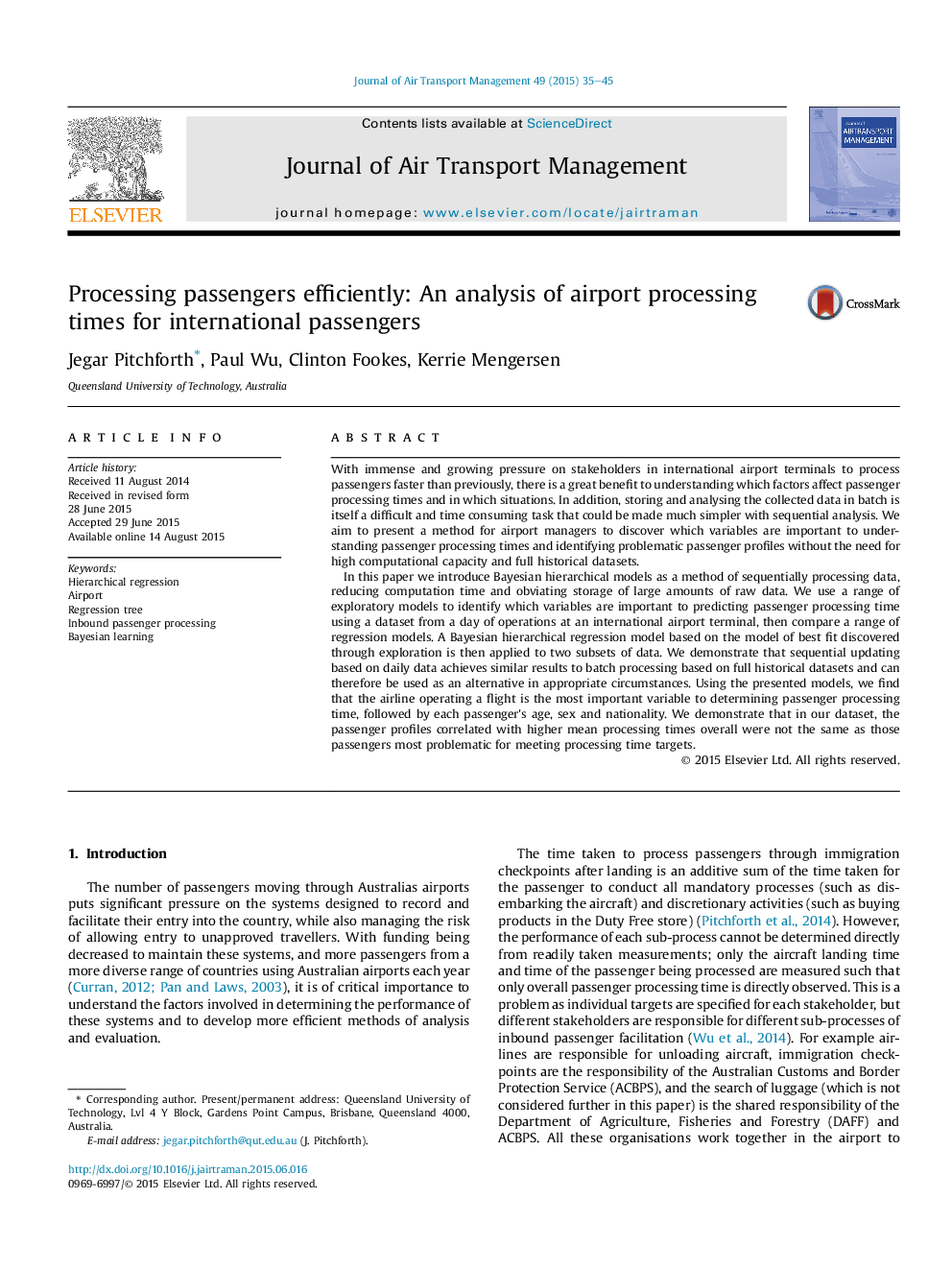| Article ID | Journal | Published Year | Pages | File Type |
|---|---|---|---|---|
| 1030720 | Journal of Air Transport Management | 2015 | 11 Pages |
•A Bayesian hierarchical model to sequentially process airport data is presented.•Exploratory models are applied to select informative variables.•A set of regression models is tested for fit to data.•The results of a Bayesian hierarchical regression model are explored for insights.
With immense and growing pressure on stakeholders in international airport terminals to process passengers faster than previously, there is a great benefit to understanding which factors affect passenger processing times and in which situations. In addition, storing and analysing the collected data in batch is itself a difficult and time consuming task that could be made much simpler with sequential analysis. We aim to present a method for airport managers to discover which variables are important to understanding passenger processing times and identifying problematic passenger profiles without the need for high computational capacity and full historical datasets.In this paper we introduce Bayesian hierarchical models as a method of sequentially processing data, reducing computation time and obviating storage of large amounts of raw data. We use a range of exploratory models to identify which variables are important to predicting passenger processing time using a dataset from a day of operations at an international airport terminal, then compare a range of regression models. A Bayesian hierarchical regression model based on the model of best fit discovered through exploration is then applied to two subsets of data. We demonstrate that sequential updating based on daily data achieves similar results to batch processing based on full historical datasets and can therefore be used as an alternative in appropriate circumstances. Using the presented models, we find that the airline operating a flight is the most important variable to determining passenger processing time, followed by each passenger's age, sex and nationality. We demonstrate that in our dataset, the passenger profiles correlated with higher mean processing times overall were not the same as those passengers most problematic for meeting processing time targets.
